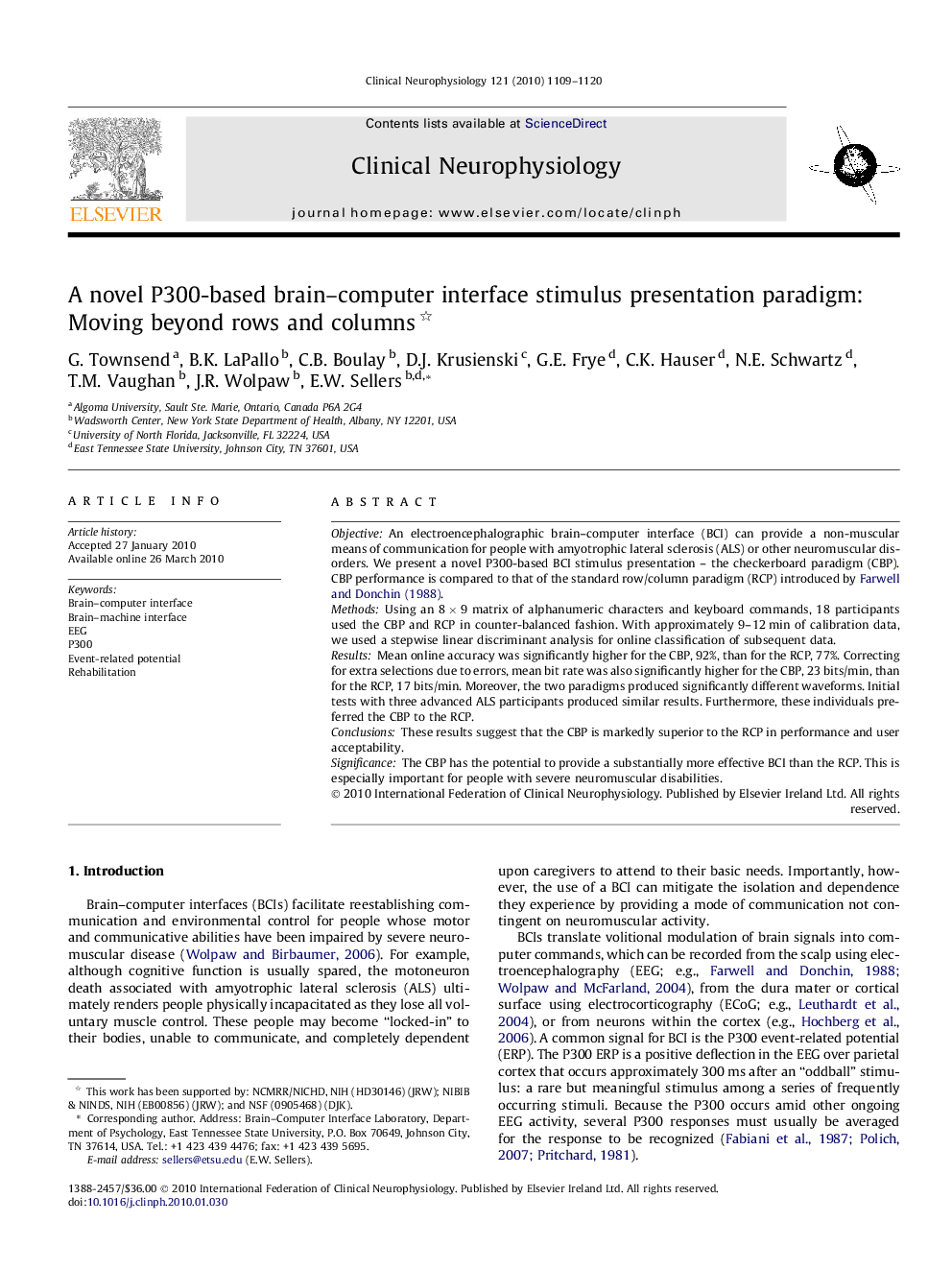| Article ID | Journal | Published Year | Pages | File Type |
|---|---|---|---|---|
| 3045936 | Clinical Neurophysiology | 2010 | 12 Pages |
ObjectiveAn electroencephalographic brain–computer interface (BCI) can provide a non-muscular means of communication for people with amyotrophic lateral sclerosis (ALS) or other neuromuscular disorders. We present a novel P300-based BCI stimulus presentation – the checkerboard paradigm (CBP). CBP performance is compared to that of the standard row/column paradigm (RCP) introduced by Farwell and Donchin (1988).MethodsUsing an 8 × 9 matrix of alphanumeric characters and keyboard commands, 18 participants used the CBP and RCP in counter-balanced fashion. With approximately 9–12 min of calibration data, we used a stepwise linear discriminant analysis for online classification of subsequent data.ResultsMean online accuracy was significantly higher for the CBP, 92%, than for the RCP, 77%. Correcting for extra selections due to errors, mean bit rate was also significantly higher for the CBP, 23 bits/min, than for the RCP, 17 bits/min. Moreover, the two paradigms produced significantly different waveforms. Initial tests with three advanced ALS participants produced similar results. Furthermore, these individuals preferred the CBP to the RCP.ConclusionsThese results suggest that the CBP is markedly superior to the RCP in performance and user acceptability.SignificanceThe CBP has the potential to provide a substantially more effective BCI than the RCP. This is especially important for people with severe neuromuscular disabilities.
